Navigating a keto lifestyle while managing a nut allergy or intolerance can seem challenging at first glance. The ketogenic diet, known for its high-fat, low-carbohydrate approach, often includes nuts and nut flours as staple ingredients.
With the rise of food sensitivities and the necessity for dietary inclusion, a vast array of nut-free keto options have emerged. These alternatives ensure that individuals with nut allergies can enjoy the benefits of keto without compromising their health or taste.
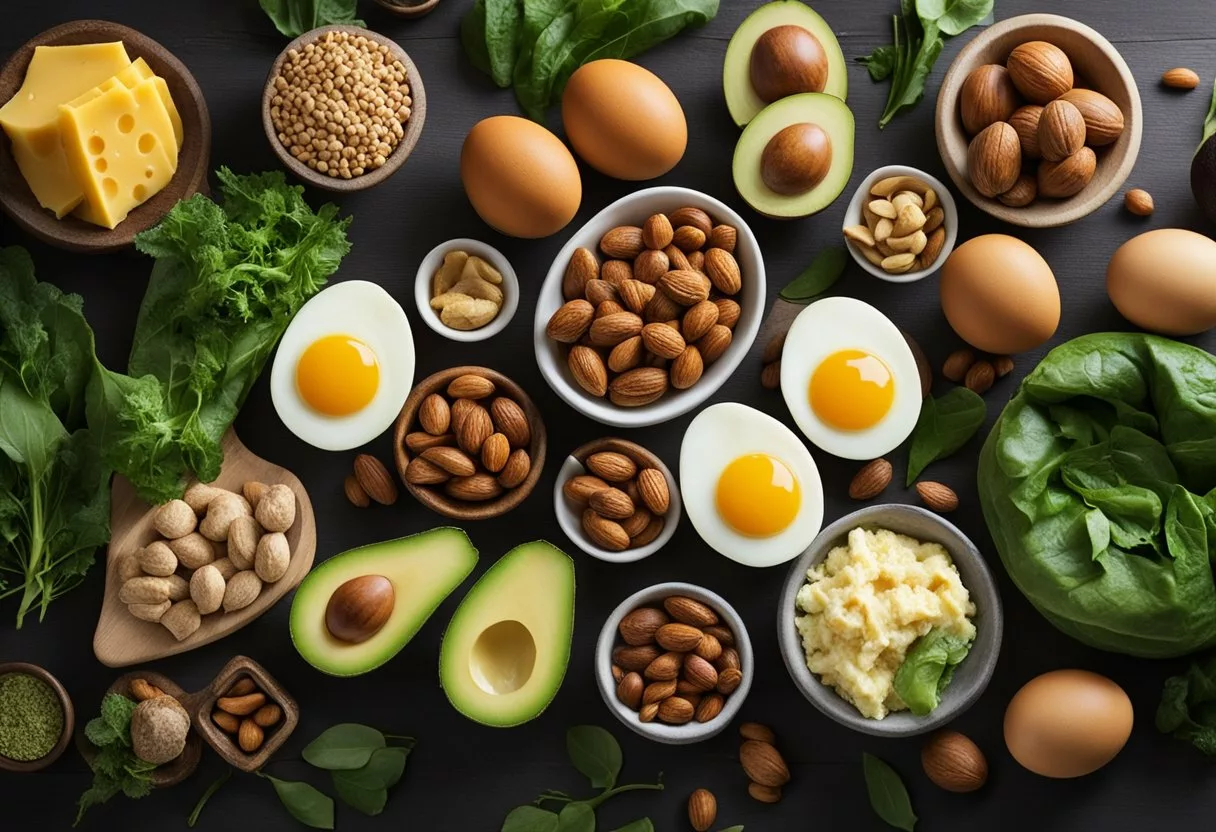
The increasing availability of information and nut-free keto recipes is indicative of a broader understanding of dietary restrictions within the health food community. By substituting nuts with seeds, coconut products, or other nut-free fats and proteins, those on a nut-free keto diet can indulge in a wide range of meals.
From savory main courses to sweet desserts, the options are plentiful and designed to cater to the nutritional needs while offering palatable delights.
Transitioning to a nut-free keto diet incorporates careful ingredient selection and creative recipe adaptation, aiming to provide the same satisfaction and variety that traditional keto diets offer.
Key Takeaways
- Nut-free keto options provide a safe and enjoyable dietary path for individuals with nut allergies.
- A variety of nut-free alternatives are available, ensuring a diverse and satisfying low-carb menu.
- Proper ingredient swaps and recipe adaptations are key to a successful and flavorful nut-free keto diet.
Understanding Nut-Free Keto Diet
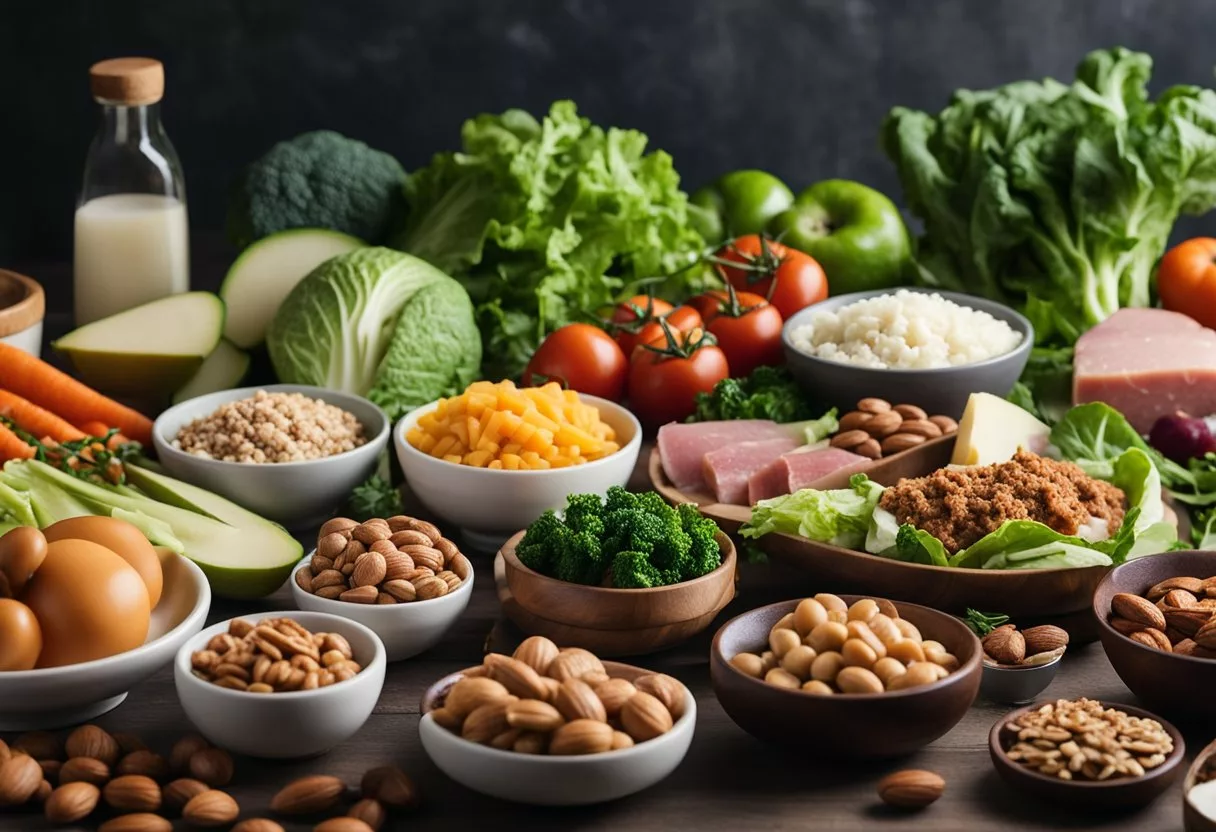
Engaging in a ketogenic diet typically implies high fat and low carbohydrate intake. For individuals with nut allergies or intolerances, navigating a standard keto diet can be challenging since nuts are a common ingredient. This section will provide clarity on what constitutes a nut-free keto diet and the benefits of choosing this path.
Defining Nut-Free Keto
A nut-free keto diet maintains the core principles of the standard ketogenic diet—low in carbohydrates and high in fats—while eliminating nuts to cater to those with allergies or sensitivities. Here, fats are sourced from nut-free foods, ensuring that individuals do not encounter allergens. The focus is on high-fat, nut-free foods such as seeds, dairy (if tolerated), and healthy oils. To compensate for the fiber typically obtained from nuts, one incorporates fiber-rich, nut-free vegetables and seeds (like chia or flaxseeds) to ensure a balanced diet.
Benefits of a Nut-Free Keto Diet
Individuals opting for a nut-free keto diet often experience the same benefits as those on a traditional ketogenic diet—weight management and improved blood sugar control—without the risk of allergic reactions. This adaptation enables them to maintain a state of ketosis, the metabolic state in which the body burns fat for fuel instead of carbohydrates. Additionally, the inclusion of diverse fat sources can lead to a more varied micronutrient intake, which could benefit overall health. It is also often helpful for those who find it difficult to limit nut consumption due to their palatability, thereby supporting better adherence to dietary goals.
Essential Ingredients for Nut-Free Keto
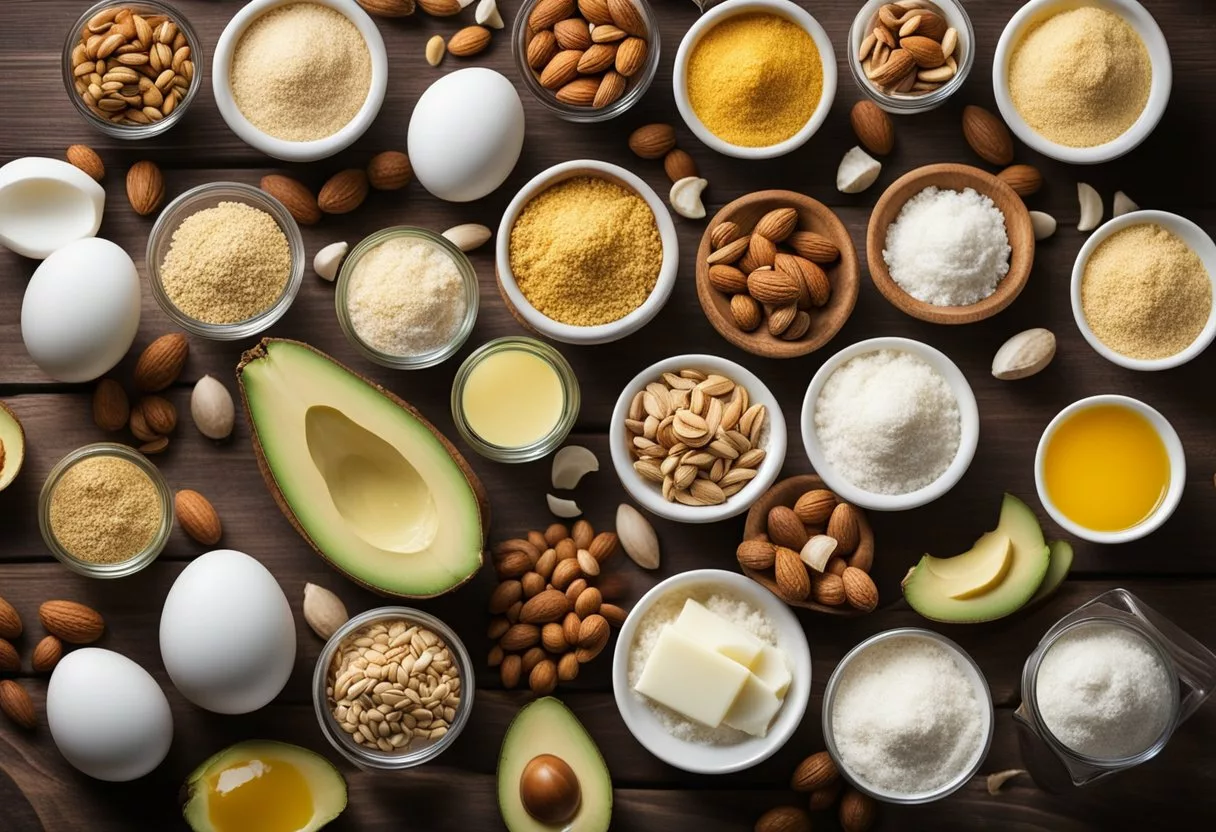
When preparing nut-free keto meals, it’s important to understand the staples that make up the bulk of recipes. These key ingredients ensure adherence to the ketogenic principles while avoiding nuts, making the diet inclusive for those with nut allergies or preferences.
Nut-Free Fats and Oils
Nut-free fats are a cornerstone of the keto diet, providing much-needed energy and helping to keep the body in a state of ketosis.
- Coconut Oil: A versatile fat that is not derived from nuts, suitable for cooking and baking.
- Olive Oil: An essential heart-healthy fat, perfect for dressings and low-heat cooking.
Both oils should be used in moderation to maintain the balance of macronutrients required for a ketogenic diet.
Keto-Friendly Sweeteners
Sweeteners that don’t spike blood sugar levels are critical for maintaining ketosis.
- Stevia: A natural, sugar-free sweetener that has no impact on blood glucose levels.
- Erythritol: A sugar alcohol that is keto-friendly, with a negligible effect on insulin response.
These sweeteners can be used in place of sugar in a variety of keto recipes to provide sweetness without the carbs.
Nut-Free Protein Sources
Adequate protein intake is crucial on a keto diet, but without nuts, one must source protein from other foods.
- Eggs: A high-quality protein source that is also rich in healthy fats.
- Chia Seeds: A plant-based protein, also rich in omega-3 fatty acids.
Eggs can be incorporated into the diet in numerous ways— from breakfast scrambles to keto baking. Chia seeds are ideal for porridge, smoothies, or as a yogurt substitute.
Nut-Free Dairy and Dairy Substitutes
Dairy products provide both fats and proteins, but for individuals who are dairy-free or vegan, substitutes are available.
- Cheese: An excellent source of fat and protein, be sure to choose varieties that are natural and have no added ingredients.
- Butter: High-fat, low-carb, excellent for cooking and creating rich sauces.
For those avoiding dairy:
- Coconut Cream: Offers a rich, creamy texture for recipes that require a dairy-like consistency without the actual dairy.
- Nutritional Yeast: Provides a cheesy flavor while being vegan and dairy-free; sprinkled on meals for added nutrients.
Salt can be used generously in keto cooking to replenish any lost electrolytes due to reduced carb intake, enhancing both flavor and nutritional balance.
Nut-Free Keto Breakfast Ideas
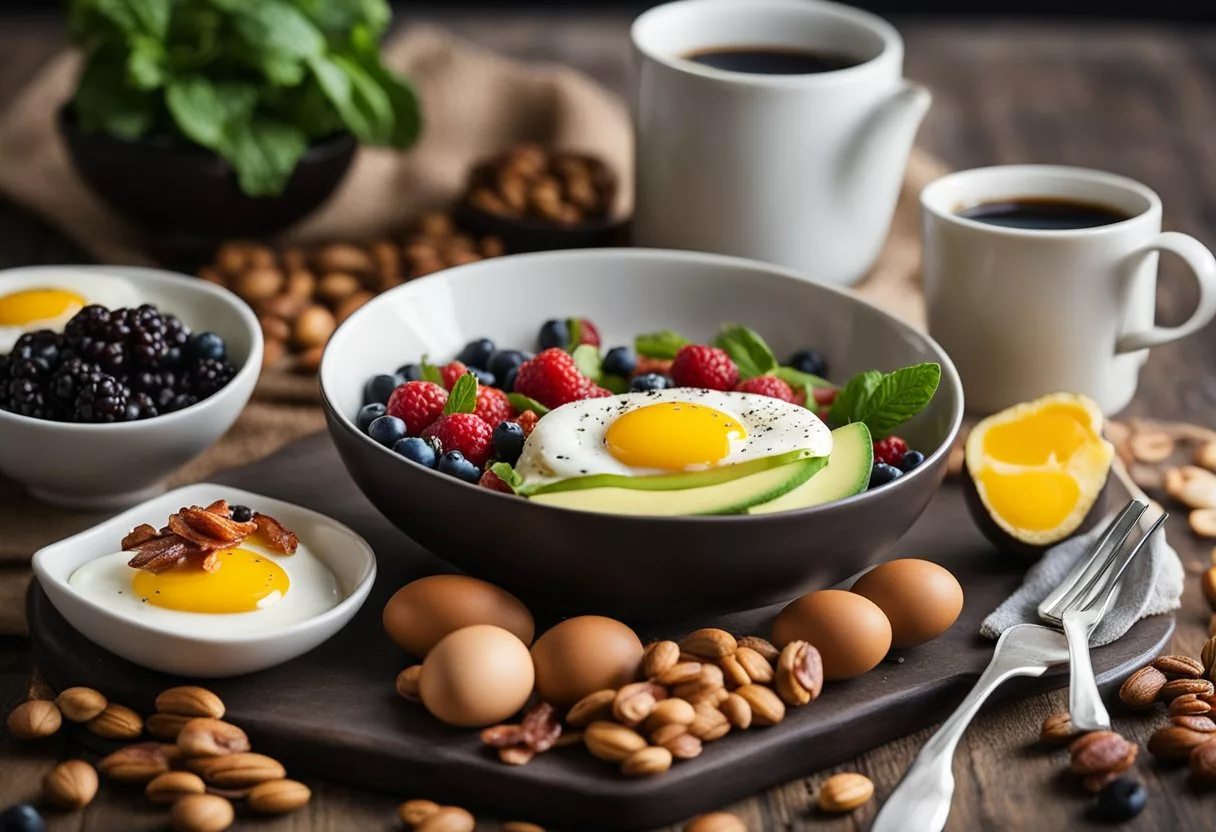
Navigating a keto diet without nuts can be simple with the right recipes. This section provides various nut-free breakfast options that are delicious and easy to prepare, ensuring that individuals with nut allergies or preferences can enjoy a diverse range of low-carb, high-fat meals to start their day.
Egg-Based Dishes
Eggs are a staple in the keto diet due to their versatility and nutrient density. They can be prepared in numerous ways that cater to a nut-free keto lifestyle:
- Starbucks Keto Breakfast Sandwich: A homemade version using bacon, egg, and cheese served between low-carb, nut-free bread or croissant alternatives.
- French Toast: Utilize low-carb, nut-free bread dipped in a mixture of eggs, cinnamon, and a keto-friendly sweetener, cooked until golden brown.
Dairy-Free Smoothies
Smoothies are an excellent option for a quick and nutritious breakfast. Even without dairy, one can create creamy and satisfying drinks:
- Avocado Smoothie: Blend together a ripe avocado with coconut milk, a handful of spinach, and a low-carb sweetener for a rich, dairy-free keto smoothie.
- Berry Smoothie: Mix a variety of berries such as strawberries and raspberries with unsweetened almond milk or coconut milk and chia seeds for added fiber.
Keto Porridges and Cereals
For those who miss the comforting warmth of traditional breakfast cereals, there are keto-friendly alternatives that are nut-free and satisfying:
- No Oats Keto Oatmeal: Prepare a hot cereal using chia seeds, hemp hearts, and flaxseed, simulating the texture of oatmeal without the carbs and potential allergens.
- Granola: Create a nut-free keto granola using seeds like sunflower and pumpkin, mixed with coconut flakes and sweetened with a keto-friendly sweetener, then baked until crispy.
Nut-Free Keto Breads and Baking
For individuals following a ketogenic lifestyle with nut allergies, or for those simply looking to diversify their low-carb diet, nut-free keto breads and baking are essential. These options often employ alternative flours and seeds to create delectable baked goods without compromising on taste or texture.
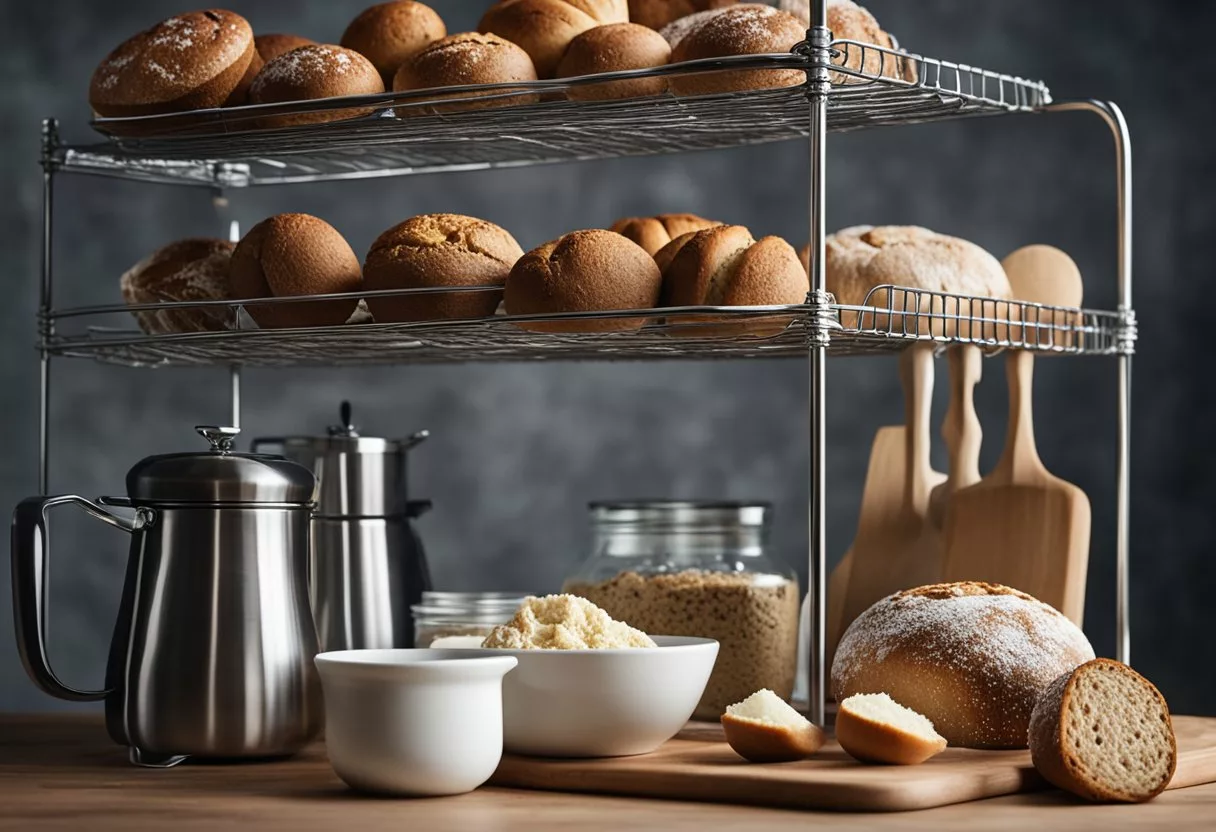
Nut-Free Keto Bread Alternatives
Nut-free keto bread typically eschews common ingredients like almond flour, instead relying on sources such as coconut flour and ground sunflower seed meal. Psyllium husk powder is a popular inclusion, providing a bread-like texture and helping to bind ingredients due to its high-fiber content. Here is a list of common replacements for nut flours in keto bread recipes:
- Coconut Flour: A low-carb, nut-free alternative rich in fiber, often needing more liquid in recipes due to its high absorbency.
- Sunflower Seed Meal: Ground sunflower seeds serve as a one-to-one replacement for almond flour and reduces overall net carbs.
- Sesame Oil: Can add a nutty flavor without using nuts, enhancing the bread’s taste and texture.
For those counting carbohydrates, it’s critical to consider the net carbs of these substitutes to maintain ketosis.
Nut-Free Keto Pastries
Pastries like muffins, scones, and rolls can also be part of a nut-free keto diet. Key ingredients in these pastries are similar to bread alternatives, often relying on coconut flour or seed meals as the base. The creativity in these recipes comes through in the use of various seeds, dairy products, and keto-friendly sweeteners that offer diverse flavors and textures while keeping the net carbs low. Here are a couple of essential components for nut-free keto pastries:
- Coconut flour: Provides structure to muffins and scones without nuts.
- Psyllium Husk: Offers a doughy texture and helps pastries rise without gluten.
Main Courses and Dinners
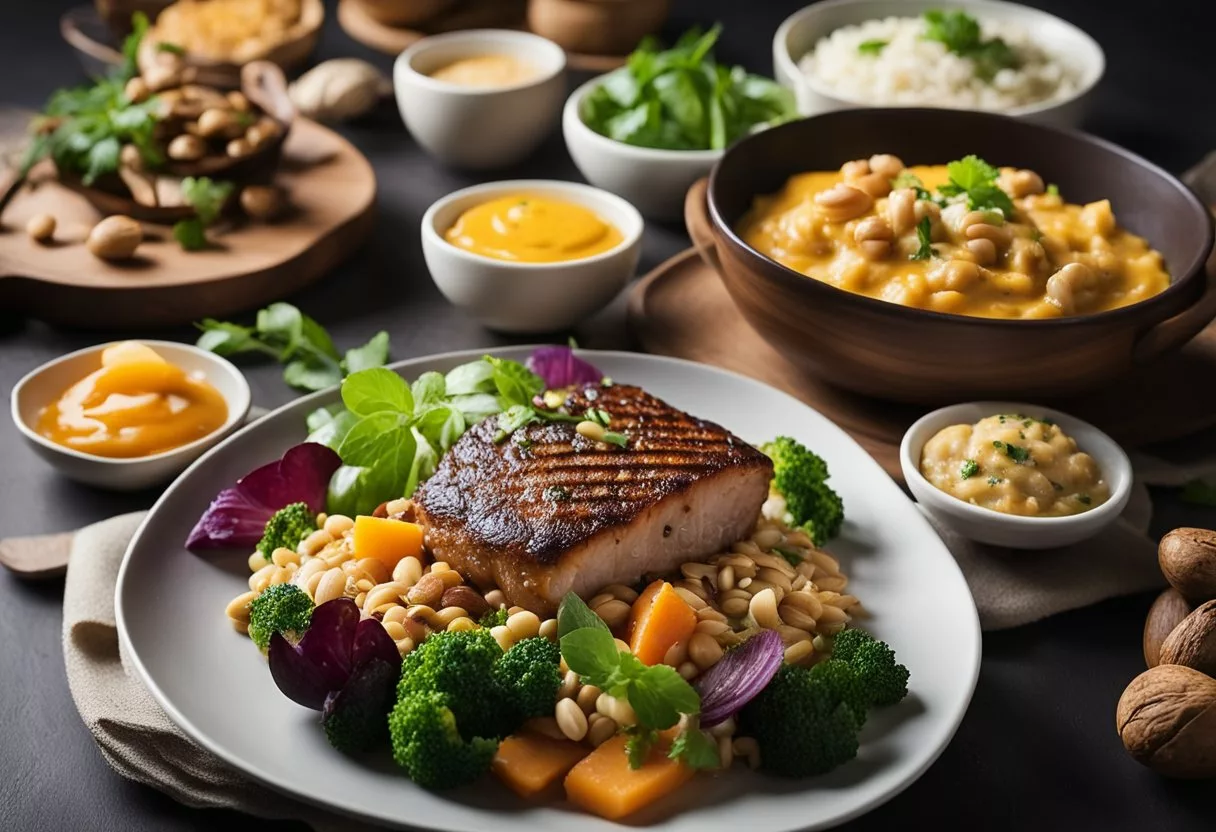
Navigating a ketogenic diet without nuts involves focusing on meats and vegetarian dishes that are low in carbohydrates and high in fats. The recipes selected ensure that dinners remain diverse and flavourful while adhering to dietary constraints.
Keto-Friendly Nut-Free Meats
Beef:
- Steak: A simple grilled or pan-seared steak is a staple for a keto dinner. Beef is naturally nut-free and rich in protein and fat.
- Cuban Picadillo: A ground beef dish that’s made with tomatoes, olives, and spices.
Poultry:
- Roasted Chicken: Opt for a whole roasted chicken seasoned with keto-friendly spices.
- Turkey Breast: Easily cooked in an Instant Pot, turkey breast can be both a time-saver and a delicious keto option.
Pork:
- Pork Sirloin Roast: Roast with a blend of herbs for a satisfying main course.
- Pan-Fried Cod with Pork Crust: For a twist, coat cod in a pork rind crust and pan-fry until crispy.
Seafood:
- Salmon: A smoked salmon pate or baked salmon provides heart-healthy fats without carbs.
- Shrimp: Shrimp can be grilled, sautéed with garlic, or incorporated into a keto-friendly seafood stir-fry.
Vegetarian Nut-Free Keto Dishes
Cauliflower-Based:
- Cauliflower Fried Rice: Sautéed with other keto-friendly vegetables for a grain-free alternative to traditional rice.
- Whole Roasted Cauliflower: Seasoned and roasted as a flavorful centerpiece for any meal.
Cheese and Egg-Heavy:
- Cheese Stuffed Mushrooms: Use portobello mushrooms as a base for a filling cheese mixture.
- Keto Omelette: Eggs as a primary ingredient with a variety of low-carb vegetables and cheese.
Leafy Greens:
- Keto Salads: Combine leafy greens like spinach or kale with ingredients like avocado, cheese, and a keto-friendly dressing.
- Roasted Broccolini: Oven-roasted with garlic and olive oil for a hearty side or main dish.
By ensuring that these meats and vegetarian options are nut-free, individuals following a keto diet can enjoy a range of delicious and satisfying dinners while maintaining their dietary goals. Each recipe offers a balance of flavor and nutrition tailored for a ketogenic lifestyle.
Nut-Free Keto Snacks and Sides
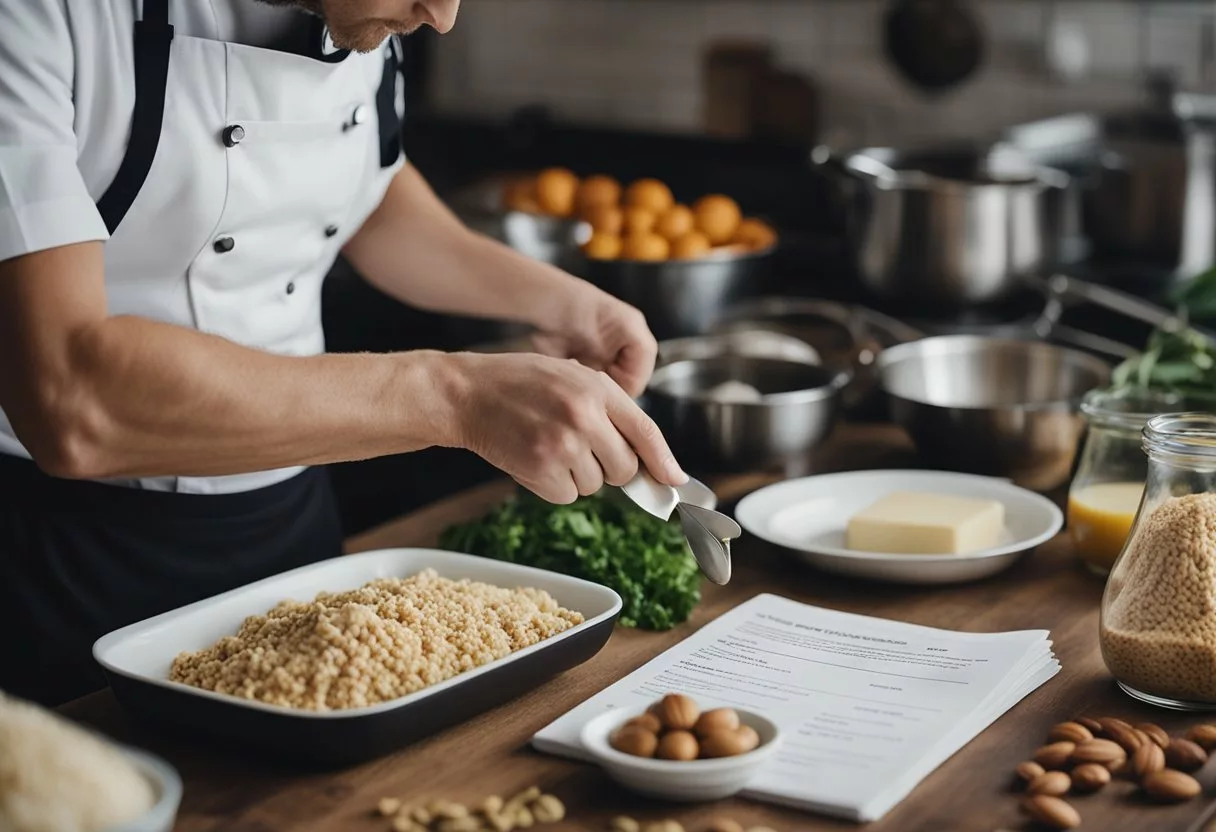
Finding snacks and sides for a ketogenic diet without nuts can be challenging, yet there are ample delicious and satisfying options that stay within the low-carb parameters. The following lists provide specifics for individuals seeking nut-free snacking alternatives, as well as side dishes that complement any keto meal plan.
Nut-Free Keto Snack Options
- Avocado: A versatile fruit, rich in healthy fats, perfect for making guacamole or sliced as a snack.
- Cheese: Varied choices from mozzarella sticks to cheddar cubes; cheese is a staple in the keto diet for snacks.
- Pumpkin Seeds: These seeds are a crunchy, nut-free option that’s also rich in minerals and provide a satiating snack.
- Smoked Salmon: High in omega-3 fatty acids, smoked salmon can be enjoyed on its own or with cream cheese.
- Hummus: (if low in carbs) A flavorful choice for vegetable dipping, made primarily from tahini and chickpeas.
Keto Side Dishes Without Nuts
- Tahini-Based Sauces: These sauces can be drizzled over cooked vegetables or salads for an added creamy texture.
- Steamed Broccoli: Best served with butter, salt, and pepper, a classic and simple nut-free keto side.
- Zucchini Fries: Coated with parmesan to stay nut-free, these fries offer a tasty, crunchy side dish.
- Cauliflower: Roasted or mashed, it serves as an excellent potato substitute on a keto diet.
Each option aligns with the key principles of a ketogenic diet, focusing on low-carb, high-fat foods while excluding nuts for those with allergies or preferences to avoid them.
Decadent Nut-Free Keto Desserts

Nut-free keto desserts offer a delightful way to enjoy sweet treats without compromising dietary restrictions. From sumptuous cakes to creamy ice creams, these desserts substitute nuts with ingredients like coconut, chocolate, and seeds to align with both keto and nut-free needs.
Keto Cakes and Cheesecakes
For those looking to indulge in a slice of cake, nut-free keto cakes are rich and satisfying. One might enjoy Low-Carb Blueberry Cheesecake Bars which feature coconut flour and oil in lieu of traditional nut-based flours. Additionally, the classic Keto Cheesecake utilizes cream cheese and sour cream, perfected with the hint of vanilla, resting on a crust that cleverly uses sesame seeds and shredded coconut to remain nut-free.
Nut-Free Keto Ice Cream and Frozen Treats
Nut-free keto ice cream caters to the frozen dessert lovers. These frozen treats maintain a creamy texture by using alternatives like coconut cream, which serves as an excellent base for creating an array of flavors. The absence of sugar is skillfully addressed using sugar-free sweeteners ensuring the sweet taste is intact without added carbs.
Nut-Free Chocolate Delights
Chocolate lovers need not feel left out in the nut-free keto journey. Nut-free chocolate keto desserts often incorporate cacao beans, which are packed with minerals and antioxidants, giving a nutritious edge to the sweet delicacies. A popular choice could be a Low Carb Chocolate Cake that avoids dairy and nuts while satisfying chocolate cravings. Chocolate chips, when used, are typically sugar-free, ensuring the overall dessert remains keto-friendly.
Nut-free keto desserts carefully balance the need to avoid nuts while staying within the low-carb, high-fat parameters of the ketogenic diet. The use of ingredients like coconut and sugar-free chocolate allows for a variety of decadent desserts to be enjoyed without compromising health goals.
Nut-Free Keto Recipe Specialties

Nut-free keto recipes offer a diverse range of specialties that cater to dietary restrictions without compromising on taste or texture. These recipes creatively replace traditional nut-based ingredients to provide delicious alternatives.
Specialty Keto Baked Goods
Nut-free keto baked goods often rely on coconut flour or psyllium husk powder as substitutes for almond flour. These alternatives allow individuals with nut allergies to enjoy baked treats that are both low in carbohydrates and free from gluten.
- Zucchini Bread: Utilizing coconut flour, this moist and flavorful bread is a perfect example of a gluten-free, nut-free keto staple.
- Banana Bread: Crafted with a blend of coconut flour and psyllium husk powder, this banana bread retains the classic taste without the use of nuts.
Unique Nut-Free Keto Delicacies
The keto diet isn’t limited to baked goods; it also boasts a range of unique delicacies that are nut-free and satisfying.
- Cheese-Based Dishes: Many keto dishes replace flour with cheese to achieve a similar consistency without the nuts. Dishes like a flourless cheese crust pizza offer a nut-free keto-friendly alternative without sacrificing flavor.
- Avocado-Based Recipes: Avocado serves as a nutrient-dense, healthy fat-filled base for various keto recipes, contributing to creamy textures in dishes such as avocado chocolate mousse.
Safe Food Preparation and Storage
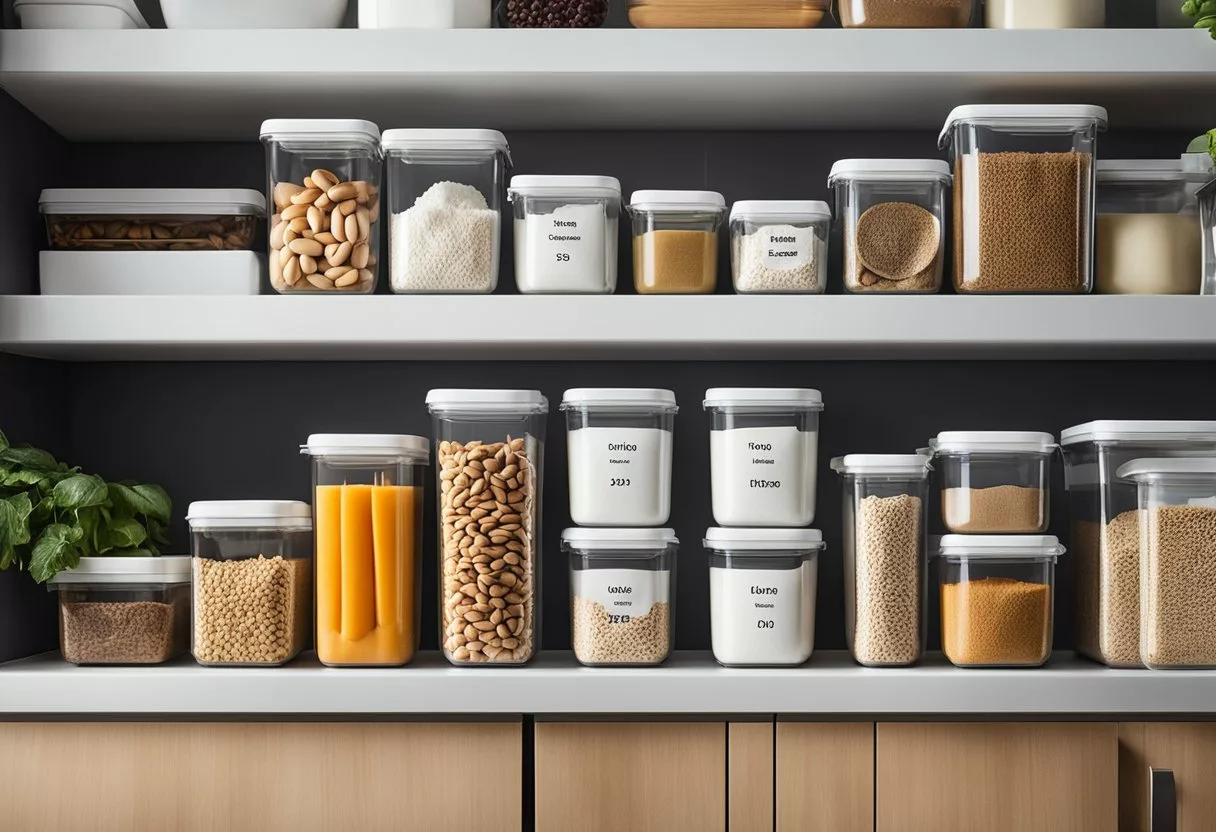
When preparing and storing nut-free keto foods, the primary concerns are to prevent cross-contamination and to ensure that foods remain fresh and safe to consume. Attention to these details is critical for individuals with nut allergies and for maintaining the integrity of nut-free keto recipes.
Avoiding Cross-Contamination
Cross-contamination can occur when nut-free products come into contact with nuts, thereby posing a risk to those with nut allergies. It is crucial to use separate utensils, cutting boards, and preparation areas for nut-free keto foods. Preparing egg whites and yolks in different bowls with cleaned equipment is an example of diligence required to prevent allergen exposure.
Proper Storage of Nut-Free Keto Foods
Nut-free keto foods require proper storage to extend their shelf-life and prevent spoilage. Here is how someone might optimally store various keto ingredients:
- Egg Whites and Egg Yolks: Store separately in air-tight containers and keep them refrigerated. Use egg whites within 2-4 days and egg yolks within 1-2 days.
- Nut-Free Flours: Keep in a cool, dry place away from direct sunlight. Consider using vacuum-sealed containers for longer shelf life.
- Prepared Nut-Free Keto Meals: Refrigerate promptly in covered containers and consume within 3-4 days. For longer storage, freezing is an option but ensure to label and date the containers.
By adhering to these storage techniques, consumers can maintain the safety and nutritional value of their nut-free keto foods.
Adapting Recipes to Nut-Free Keto

Adapting to a nut-free ketogenic lifestyle does not mean sacrificing flavor or variety in your diet. The key is strategically substituting common nut ingredients while managing portion size and macronutrients to maintain the low net carbs central to keto.
Substituting Common Nut Ingredients
When a recipe calls for nut butters, one can often replace them with seed butters such as sunflower seed butter. If a keto recipe requires a nut-based flour, like almond flour, coconut flour is a nut-free alternative that’s low in net carbs yet high in fiber. However, since coconut flour is more absorbent, one should use only a quarter of the amount compared to almond flour.
- Ground sunflower seed meal can also be an effective substitute for almond flour in a 1:1 ratio but may require an increase in rising agents due to its consistency.
- For a crunch in salads or as a snack, raw sunflower seeds serve as a nutritious nut replacement.
When integrating these substitutes into recipes, it’s crucial to remember that per volume, they might have different nutritional profiles than their nut counterparts, specifically in terms of fat and protein content.
Portion Control and Macronutrient Management
Managing portion sizes ensures that dietary preferences do not lead to an increase in net carb intake. For example, even though coconut flour is a suitable nut-free option, its macros can quickly add up, so monitoring portion sizes helps maintain a balance consistent with ketogenic guidelines.
| Ingredient | Net Carbs Per 100g | Protein Per 100g | Fat Per 100g |
|---|---|---|---|
| Almond Flour | 10g | 21g | 56g |
| Coconut Flour | 18g | 19g | 9g |
| Ground Sunflower Seed | 20g | 27g | 49g |
| Sunflower Seeds | 20g | 21g | 51g |
To manage a diet effectively, individuals should track the macros of each substituted ingredient to maintain ketosis. It is important to note that while these replacements are lower in net carbs, their overall nutritional value should be considered within the context of a day’s meals.
Frequently Asked Questions
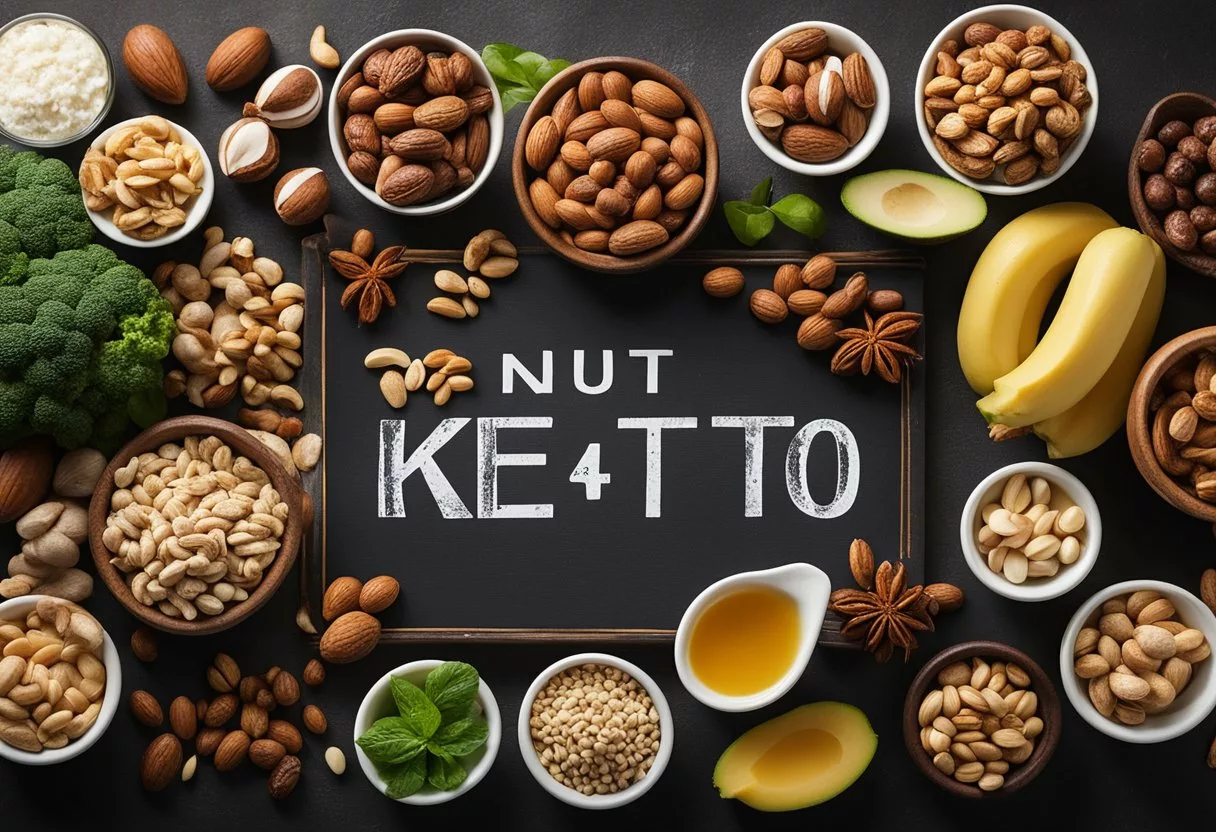
Navigating a nut-free keto diet requires carefully selecting alternatives that comply with keto macronutrient ratios. This section addresses common inquiries regarding nut-free keto options.
What are some nut-free substitutes for almond flour in keto recipes?
For those avoiding nuts, coconut flour is a suitable substitute for almond flour in keto recipes, albeit requiring adjustments in liquid content due to its higher absorbency. Sunflower seed flour can also be used as a one-to-one substitute for almond flour.
How can I make keto French toast without using nut-based ingredients?
Keto French toast can be made nut-free by using coconut flour or seeds-based bread as a base. Combine this with a mixture of eggs, keto-friendly milk, and cinnamon for a traditional French toast flavor without nuts.
Can I prepare a keto breakfast loaf without nuts, and if so, what are some key ingredients?
A keto breakfast loaf can certainly be made without nuts, incorporating ingredients like coconut flour, eggs, and psyllium husk to achieve the right consistency and flavor, along with the desired macros for a ketogenic diet.
What are the alternatives to nuts for a keto-friendly buttermilk recipe?
Nut-free keto buttermilk can be made using heavy cream diluted with water or a combination of keto-compliant milk and lemon juice or vinegar to replicate the tangy taste of buttermilk.
Is it possible to enjoy keto teriyaki chicken while avoiding nut products?
One can enjoy keto teriyaki chicken by preparing a sauce using ingredients like tamari, a gluten-free soy sauce alternative, combined with a keto-friendly sweetener like erythritol and avoiding nut-based thickeners.
What would be the best approach for a nut-free keto diet to maintain ketosis?
To maintain ketosis on a nut-free keto diet, focus on high-fat, low-carb foods like avocados, seeds, and non-starchy vegetables, and be vigilant about reading food labels for hidden nut content.